





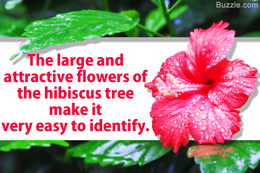 According to plant taxonomy, identification of trees is based on various aspects such as leaves, bark, twigs, wood type, canopy shape, flowers, and fruits. Each of the tree species has a set of specific features that differentiates it from the rest. Even though it is not so easy to identify trees, having a brief knowledge about different criteria is sure to help you recognize them better.Among the several aspects, leaves are the easiest plant part to identify trees. In fact, evergreen tree identification is mostly done by studying the foliage and the cones. In order to distinguish trees by leaves, we need to study the leaf color, size, shape, texture (with or without hair), margin, and arrangement (phyllotaxy). Likewise, tree identification by flower requires examining various flower characteristics.Identifying Trees by Their FlowersOrnamental tree identification can be done with the help of flowers. When we say tree identification by flower, the inflorescence is the main criterion used in this approach. Inflorescence refers to the pattern of flower arrangement in the stalk. Other features of the flower to be studied include color, shape, sepals, petals, fertility, pollination, etc. Plant identification by flower color is not always reliable, since there are many species of plants that have different flower colors. The following is a list of trees along with information on how the flowers of the respective trees look.Pear Tree
According to plant taxonomy, identification of trees is based on various aspects such as leaves, bark, twigs, wood type, canopy shape, flowers, and fruits. Each of the tree species has a set of specific features that differentiates it from the rest. Even though it is not so easy to identify trees, having a brief knowledge about different criteria is sure to help you recognize them better.Among the several aspects, leaves are the easiest plant part to identify trees. In fact, evergreen tree identification is mostly done by studying the foliage and the cones. In order to distinguish trees by leaves, we need to study the leaf color, size, shape, texture (with or without hair), margin, and arrangement (phyllotaxy). Likewise, tree identification by flower requires examining various flower characteristics.Identifying Trees by Their FlowersOrnamental tree identification can be done with the help of flowers. When we say tree identification by flower, the inflorescence is the main criterion used in this approach. Inflorescence refers to the pattern of flower arrangement in the stalk. Other features of the flower to be studied include color, shape, sepals, petals, fertility, pollination, etc. Plant identification by flower color is not always reliable, since there are many species of plants that have different flower colors. The following is a list of trees along with information on how the flowers of the respective trees look.Pear Tree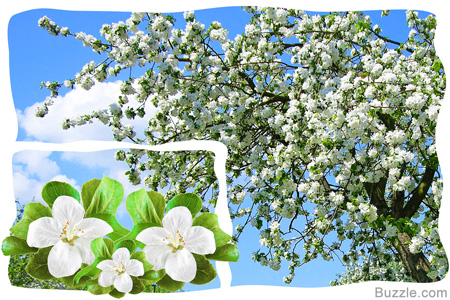 The pear tree belongs to the genus pyrus and has several cultivars, which are cultivated for fruits or decorative purpose. The pear tree flowers are white, cream or pink in color and have five uniform petals. You can see attractive blooms of pear trees in early spring that covers the whole tree.Pine Tree
The pear tree belongs to the genus pyrus and has several cultivars, which are cultivated for fruits or decorative purpose. The pear tree flowers are white, cream or pink in color and have five uniform petals. You can see attractive blooms of pear trees in early spring that covers the whole tree.Pine Tree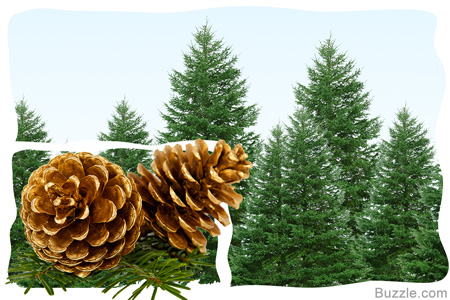 Pine is one of the most sought-after ornamental trees. Belonging to coniferous varieties, the pine tree does not produce flowers as reproductive structures. Rather you will notice large brown color cones developing in the stem. Notable features of pine trees include needle-shaped dark green leaves and attractive cones.Maple Tree
Pine is one of the most sought-after ornamental trees. Belonging to coniferous varieties, the pine tree does not produce flowers as reproductive structures. Rather you will notice large brown color cones developing in the stem. Notable features of pine trees include needle-shaped dark green leaves and attractive cones.Maple Tree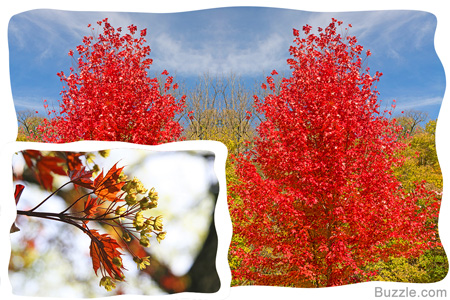 Maple is a very popular ornamental tree, well-known for its attractive foliage. Maple trees are available in orange, red, yellow and green flowers. Each flower is small and symmetrical (regular) with five petals. Nevertheless, the flowers are formed in dense clusters, thus giving the tree a striking feature during the blooming season (winter or spring).Oak Tree
Maple is a very popular ornamental tree, well-known for its attractive foliage. Maple trees are available in orange, red, yellow and green flowers. Each flower is small and symmetrical (regular) with five petals. Nevertheless, the flowers are formed in dense clusters, thus giving the tree a striking feature during the blooming season (winter or spring).Oak Tree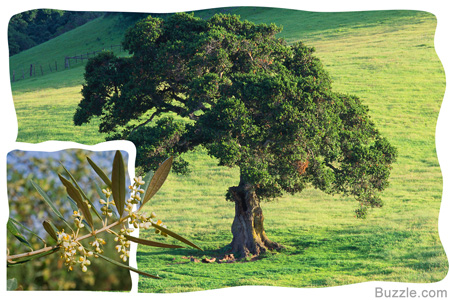 Oak tree, another popular garden tree, it bears male flowers and female flowers in different branches. Male oak flowers are inconspicuous when observed singularly. They are developed in catkin (cat tail like) inflorescence and appear pendulous. On the contrary, female oak flowers are erect and solitary. The female flower after fertilization give rise to acorn.Tulip Tree
Oak tree, another popular garden tree, it bears male flowers and female flowers in different branches. Male oak flowers are inconspicuous when observed singularly. They are developed in catkin (cat tail like) inflorescence and appear pendulous. On the contrary, female oak flowers are erect and solitary. The female flower after fertilization give rise to acorn.Tulip Tree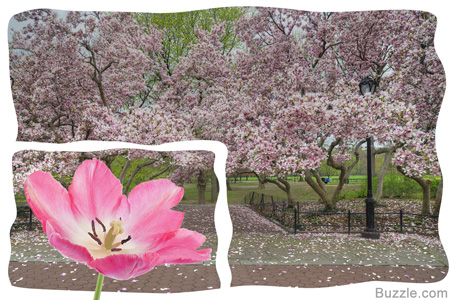 Large poplar trees that bear yellow, tulip-shaped flowers are called tulip trees. They can grow up to a height of about 100 feet. The flowers are greenish-yellow with bright orange coloration in the center. Each individual flower is about 2½ inch in length. Tulip tree flowers are mostly developed at the top portion of the tree in spring time. Hence, for very tall tulip trees, it is very difficult to see the flowers.Eucalyptus Tree
Large poplar trees that bear yellow, tulip-shaped flowers are called tulip trees. They can grow up to a height of about 100 feet. The flowers are greenish-yellow with bright orange coloration in the center. Each individual flower is about 2½ inch in length. Tulip tree flowers are mostly developed at the top portion of the tree in spring time. Hence, for very tall tulip trees, it is very difficult to see the flowers.Eucalyptus Tree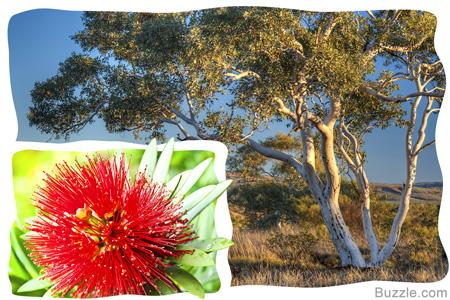 Eucalyptus, a large tropical tree, bears white, pink, yellow or red color flowers. In an unopened, vase-shaped flower bud, you will notice a slightly pointed cap, which later falls off when the bud opens. A characteristic feature of eucalyptus flower is the absence of noticeable petals. In a single flower, there are more than 20 fluffy filaments (the male part that bears anther at the top), which contribute to the flower color.Frangipani Tree
Eucalyptus, a large tropical tree, bears white, pink, yellow or red color flowers. In an unopened, vase-shaped flower bud, you will notice a slightly pointed cap, which later falls off when the bud opens. A characteristic feature of eucalyptus flower is the absence of noticeable petals. In a single flower, there are more than 20 fluffy filaments (the male part that bears anther at the top), which contribute to the flower color.Frangipani Tree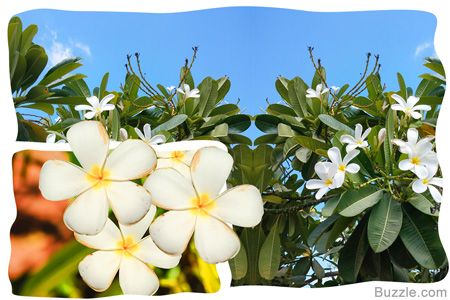 The large, vibrant-colored and fragrant flowers of frangipani makes it a popular landscaping tree. Depending upon the cultivar, frangipani flowers are white, yellow, pink or red. The flower is propeller-shaped and borne in clusters in the terminal branches. Do not get confused with the bushy type, as there are both shrub and tree varieties of frangipani.Hibiscus Tree
The large, vibrant-colored and fragrant flowers of frangipani makes it a popular landscaping tree. Depending upon the cultivar, frangipani flowers are white, yellow, pink or red. The flower is propeller-shaped and borne in clusters in the terminal branches. Do not get confused with the bushy type, as there are both shrub and tree varieties of frangipani.Hibiscus Tree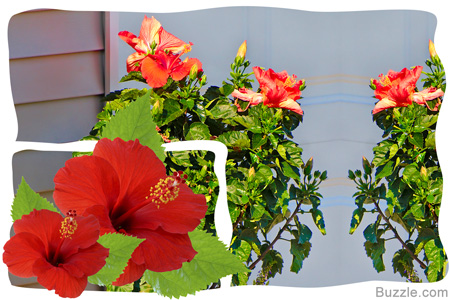 Most of us assume hibiscus to be a flowering shrub, but not a tree. Depending upon the variety, hibiscus can be maintained as both shrubs and trees. Hibiscus flowers are borne in a long stalk and are trumpet-shaped with five uniform petals. Also, based on the cultivar, flowers are white, pink, yellow, orange, or red in color. The large showy and attractive flowers make the hibiscus tree very easy to identify.A major drawback of identifying trees by flowers is that various tree species flower after several years of plantation. Hence, in such a case, collecting flowers for identification is difficult. Interested readers can refer to flower types to go through the different types of flowers along with their names and meanings.
Most of us assume hibiscus to be a flowering shrub, but not a tree. Depending upon the variety, hibiscus can be maintained as both shrubs and trees. Hibiscus flowers are borne in a long stalk and are trumpet-shaped with five uniform petals. Also, based on the cultivar, flowers are white, pink, yellow, orange, or red in color. The large showy and attractive flowers make the hibiscus tree very easy to identify.A major drawback of identifying trees by flowers is that various tree species flower after several years of plantation. Hence, in such a case, collecting flowers for identification is difficult. Interested readers can refer to flower types to go through the different types of flowers along with their names and meanings.
Copyright © www.100flowers.win Botanic Garden All Rights Reserved